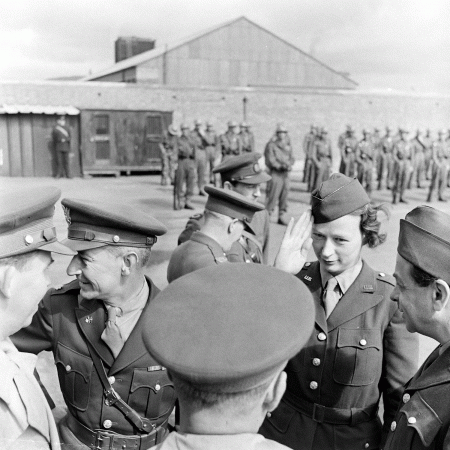The Woman War Correspondent, the U.S. Military,
and the Press, 1846-1947
by Carolyn M. Edy
This book outlines the rich history of more than 250 women who worked as war correspondents up through World War II, while demonstrating the ways in which the press and the military both promoted and prevented their access to war. Despite the continued presence of individual female war correspondents in news accounts, if not always in war zones, it was not until 1944 that the military recognized these individuals as a group and began formally considering sex as a factor for recruiting and accrediting war correspondents. This group identity created obstacles for women who had previously worked alongside men as “war correspondents,” while creating opportunities for many women whom the military recruited to cover woman’s angle news as “women war correspondents.” This book also reveals the ways the military and the press, as well as women themselves, constructed the concepts of “woman war correspondent” and “war correspondent” and how these concepts helped and hindered the work of all war correspondents even as they challenged and ultimately expanded the public’s understanding of war and of women.

Reviews
American journalists (both women and men) provided war news long before such coverage was regulated or censored by the government, notes Carolyn Edy in this fascinating and thoroughly documented history of women war correspondents. Yet it is the regulatory relationship between government and press that enables a deeper understanding of their work. Edy’s close examination of changing military policies regarding women in war zones shines light on challenges faced and contributions made as these women sought acceptance as credible reporters.... Women war correspondents had remarkable experiences—some lost their lives—and Edy’s book provides many of their stories. Indeed, she weaves such stories deftly with deep analysis of how correspondents gained accreditation and acceptance.... The Woman War Correspondent, the U.S. Military, and the Press: 1846 - 1947 is well researched, thoroughly enjoyable to read and would be suitable for coursework in media history, gender studies and military history. (American Journalism: A Media History Journal)
Edy rightly claims that her book goes beyond many histories of female war correspondents that offer “rich narratives about the experiences of individual women” and weave “a tale of heroic women challenging an army of chauvinistic editors and commanders.” Treating women as exceptions to a seemingly never-changing rule, such histories—like “first and only” stories—reinforce the notion that women working in jobs typically filled by men are abnormal, rendering women’s labor largely invisible. Through careful primary source research, Edy is able to move beyond this trope, arguing that women’s achievements as war correspondents have not been out of the ordinary at all. Such documentation alone makes this book valuable.... This is a valuable book with much to offer scholars interested in war correspondence and women’s press history. Two appendices provide a list of female war correspondents that could be the starting point for further studies, making it particularly valuable for graduate students and faculty working in this area. (Journalism History)
Carolyn M. Edy has broadened and deepened our understanding of women war correspondents. In so doing, she has expanded our appreciation of the scope and quality of their work and has corrected the many incomplete or incorrect conclusions of those who wrote the first drafts of history. These women served, and served well, their country and their profession, and it is good to have them restored to their proper place in history. (Michael S. Sweeney, author of The Military and the Press: An Uneasy Truce)
This volume represents a terrific research undertaking. Carolyn M. Edy has done a thorough job of exploring the intersection of public policy and gender identity. Her work displays a sophisticated understanding of gendered discourse and the construction of the genre of woman war correspondent. This study makes a significant contribution to both women's studies and the history of war correspondents in general, male as well as female. While highlighting the careers of notable women, this book also explores the careers of those whose work had previously been omitted from media history and places them within the context of the journalism of their times. (Maurine Beasley, author of Women of the Washington Press: Politics, Prejudice, and Persistence)